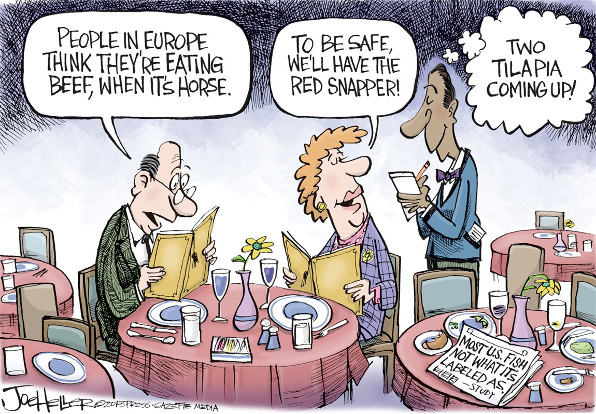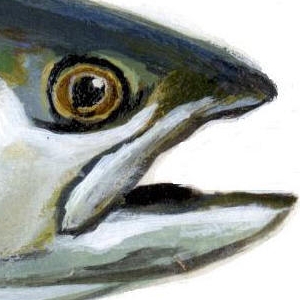We’ve posted about this before, and it seems like a good idea to post about it again, since nothing surrounding the issue has changed much for the better. The experts recommend that we all eat more Fish and Seafood, but it’s costly and vendors are still ripping us off by willfully mislabeling the catch…
 Fish misrepresentation was most common in Vancouver restaurants and Sushi bars…
Fish misrepresentation was most common in Vancouver restaurants and Sushi bars…
I’d love to eat more fish. Really. But I can’t justify spending all that money on something that may or may not be what he label says it is. Fish and Seafood are second only to Beef in price, these days, and wild stocks are dwindling, which makes the dietary experts’ recommendations environmentally evil. But even if you restrict yourself to farmed Fish and Seafood, there are still drawbacks – most notably a severely restricted selection of products to choose from. But that’s really another, separate topic.
Latest bad news…
DNA-level testing of Fish and Seafood in Vancouver has revealed that a quarter of the marine produce on store shelves there is mislabeled. That’s a huge fraction.
Researchers from the University of British Columbia (UBC) tested 281 samples of Fish and Seafood collected in Metro Vancouver between September last year and February this year, and found 70 of the samples were not as advertised.
The study frames the problems surrounding truth in Fish and Seafood labeling thus:
The supply chain for seafood is complex and opaque. A fish can be caught in Canada, gutted in China, breaded in the U.S., and ultimately sold back to Canada as an American product. Misidentification can happen anywhere along the way. When it’s intentional, it’s food fraud – a $52 billion worldwide problem defined as the misrepresentation of food for economic gain.
What’s the solution?
Julia Levin, seafood fraud campaigner with Oceana Canada, says “The key to fighting seafood fraud is boat-to-plate traceability. This means tracking the seafood product through the supply chain and requiring that key information travels with the product.”
Authors of the UBC study support several specific measures to help consumers understand what they’re buying:
- Harmonize common names of fish between major trading countries.
- Require scientific names on labels.
- Provide consumers with information about where fish was caught or farmed, its processing history, and the fishing/farming methods used.
As I said…
The situation doesn’t appear to be improving. An Oceana study conducted in the U.S. from 2010 to 2012 found the mislabeling rate to be 33 per cent. A study in Metro Vancouver 10 years ago had similar findings to the new UBC study, with a much smaller sample size. Oceana Canada found nearly half of samples tested last fall in Ottawa to be mislabeled. They will release a national seafood fraud report this fall with findings from testing done in Halifax, Toronto, Vancouver and Victoria.
However, the UBC researchers are working with technology partners to develop a portable device consumers can take to the grocery store to check whether the food in the package is what it’s billed as on the label. That technology, when perfected, could also be used to validate other foods that may be prone to mislabeling…
~ Maggie J.

